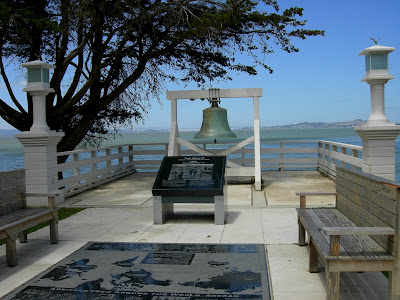 |
| Angel Island (Horseshoe Bay in foreground) |
 |
| Angel Island State Park - Ayala Cove |
 |
| Historic Quarantine Station and Current Visitor Center - Ayala Cove |
 |
| Immigration Station Barracks - China Cove, Angel Island |
 |
| Muli-tiered Bunks, Immigration Barracks - China Cove |
 |
| Immigration Station - China Cove, Angel Island |
 |
| Chinese Poem on Walls of Barracks - China Cove |
 |
| Hospital Viewed Through Barrack Windows - China Cove |
 |
| Site of Wharf at Immigration Station - China Cove |
No comments:
Post a Comment